
- The History and Significance of Our Lady of Montserrat in Barcelona
- Exploring the Legends and Myths Surrounding Montserrat Shrine
- The Role of Our Lady of Montserrat in Catalan Culture and Tradition
- Pilgrimage to Montserrat: What to Expect and How to Prepare
- Art and Architecture: A Closer Look at the Shrine of Montserrat
- Unraveling the Mysteries: The Lost Artifacts of Our Lady of Montserrat
Nestled in the stunning Montserrat mountain range, the shrine of Our Lady of Montserrat has long captivated pilgrims and tourists alike with its rich history and spiritual significance. This iconic site, home to the revered Black Madonna, embodies a remarkable blend of faith, art, and legend that continues to inspire awe in all who visit.
In exploring What Happened to Our Lady of Montserrat: Unraveling the Mysteries of Barcelona's Famous Shrine, we delve into the origins of this enigmatic figure and the various tales that have surrounded her since her inception. From miraculous events to artistic interpretations, the journey of Our Lady of Montserrat reveals a tapestry of cultural and religious narratives that are as intriguing as they are profound.
The History and Significance of Our Lady of Montserrat in Barcelona
The history of Our Lady of Montserrat dates back to the 12th century, when a group of shepherds discovered a statue of the Black Madonna in a cave on the mountain. This miraculous find quickly turned into a significant pilgrimage destination, attracting thousands of believers. The shrine's establishment not only marked the beginning of a spiritual journey for many but also embedded the site deeply within Catalonian culture and identity.
Over the centuries, the shrine has played a pivotal role in various historical events, particularly during the Spanish Civil War, when it served as a refuge for those seeking solace. The significance of Our Lady of Montserrat extends beyond its spiritual allure; it stands as a symbol of Catalan resilience and identity, representing the region's fight for autonomy and cultural preservation throughout turbulent times.
The art associated with Our Lady of Montserrat is equally significant. The statue itself is a masterpiece of medieval craftsmanship, embodying a unique style that blends influences from Romanesque and Gothic art. Visitors can also admire various works of art housed within the monastery, including paintings and sculptures that reflect the spiritual journey of the many who have visited the shrine over the centuries.
- Location: Montserrat mountain range, near Barcelona
- Discovered: 12th century by shepherds
- Role in History: Refuge during the Spanish Civil War
- Artistic Significance: Blend of Romanesque and Gothic styles
Exploring the Legends and Myths Surrounding Montserrat Shrine
The legends surrounding the Montserrat Shrine are as captivating as the site itself. One of the most famous tales recounts how the statue of the Black Madonna was brought to the mountain by angels, emphasizing its divine origins. This story has not only inspired countless pilgrims but has also deepened the mystical aura that envelops Montserrat, making it a significant spiritual landmark in Catalonia.
Another intriguing myth involves the miraculous powers attributed to the Virgin of Montserrat. Many visitors claim to have experienced profound transformations or answered prayers after visiting the shrine. Such stories contribute to an atmosphere of belief and reverence that continues to attract those seeking solace and guidance, highlighting the shrine's role as a beacon of hope.
The influence of Our Lady of Montserrat extends beyond religious circles into popular culture. This is evident in numerous artistic representations, including paintings, songs, and literature inspired by her legend. The enduring presence of these cultural artifacts showcases how the shrine's stories resonate through generations, fostered by both faith and artistic expression. Some notable representations include:
- Artworks: Various artists have depicted the Black Madonna in their works.
- Literature: Many authors reference Montserrat in their stories, highlighting its mythical status.
- Music: Compositions dedicated to the Virgin celebrate her influence and significance.
In essence, the legends and myths surrounding the Montserrat Shrine have woven an intricate tapestry that not only enhances its spiritual significance but also enriches the cultural heritage of Barcelona and Catalonia as a whole. The shrine remains a vital testament to the lasting power of faith and the enduring nature of storytelling.
The Role of Our Lady of Montserrat in Catalan Culture and Tradition
The role of Our Lady of Montserrat in Catalan culture extends far beyond its religious significance; it is deeply embedded in the identity of the Catalan people. The shrine symbolizes a profound connection to their history, spirituality, and sense of community. This connection manifests in various ways, including:
- Pilgrimage Tradition: Thousands of pilgrims visit the shrine annually, reinforcing communal bonds.
- Cultural Celebrations: Festivals honoring Our Lady showcase traditional music, dance, and gastronomy.
- Spiritual Retreats: The monastery serves as a sanctuary for reflection, meditation, and spiritual growth.
Furthermore, Our Lady of Montserrat is often viewed as a guardian of Catalonia's cultural heritage. Many Catalans regard her as a symbol of hope and resilience, especially in times of political strife. The presence of the Black Madonna in Catalan homes and public spaces signifies a shared cultural reverence that transcends mere worship.
The impact of Our Lady of Montserrat is also reflected in the arts, where she inspires countless creative expressions. From paintings depicting her likeness to contemporary music celebrating her spirit, the Black Madonna serves as a muse that resonates with both historical and modern narratives. Notable artistic representations include:
- Visual Arts: Artists like El Greco and contemporary Catalan painters have captured her image.
- Literature: Poets and writers often invoke her in works that reflect on identity and faith.
- Music: Compositions by renowned composers celebrate her significance in Catalan culture.
In summary, the multifaceted role of Our Lady of Montserrat in Catalan culture highlights her as a pivotal figure who bridges history, spirituality, and artistic expression. Her legacy continues to inspire devotion and pride, solidifying her place as a cornerstone of Catalan identity.
Pilgrimage to Montserrat: What to Expect and How to Prepare
Pilgrimage to Montserrat is an enriching experience that offers both spiritual renewal and a chance to immerse oneself in the breathtaking natural beauty of the region. As you approach the shrine, you can expect to be greeted by stunning panoramic views of the surrounding mountains and valleys, which set the stage for a profound spiritual journey. The well-maintained paths leading up to the monastery make it accessible for pilgrims of all ages, allowing everyone to partake in this sacred tradition.
To prepare for your pilgrimage, consider the following essential tips:
- Comfortable Footwear: The trails can be uneven and steep, so sturdy shoes are a must.
- Weather Preparation: Check the forecast and dress in layers, as temperatures can vary significantly.
- Hydration and Snacks: Carry water and light snacks to keep your energy up during the hike.
- Respectful Attire: Dress modestly when visiting the shrine, as it is a place of worship.
During your visit, you can participate in various activities that enhance the pilgrimage experience. Many pilgrims attend mass in the basilica, where the atmosphere is filled with reverence and devotion. Additionally, the chance to hear the famous Montserrat Boys' Choir, one of the oldest in Europe, adds an enchanting musical dimension to your journey. You may also wish to take some time for personal reflection or meditation in the serene surroundings, as the natural beauty of Montserrat often invokes a deep sense of peace.
Finally, remember that each pilgrimage is unique, shaped by personal intentions and experiences. Whether you seek spiritual guidance, cultural enrichment, or simply a break from the hustle of life, Montserrat offers a sanctuary where the connection between faith and nature is palpable. Embrace the journey, and allow the spirit of Our Lady of Montserrat to inspire and uplift you throughout your visit.
Art and Architecture: A Closer Look at the Shrine of Montserrat
The shrine of Our Lady of Montserrat showcases a magnificent blend of art and architecture that reflects both its spiritual importance and the rich cultural heritage of Catalonia. The basilica, with its striking façade and intricate details, is primarily designed in a Neo-Romanesque style, harmonizing beautifully with the surrounding natural landscape. Features such as the large rose window and the bell tower add an impressive verticality that draws the eye upward, symbolizing the connection between heaven and earth.
Inside the shrine, visitors are greeted by a wealth of artistic treasures. The centerpiece is the revered statue of the Black Madonna, a stunning example of medieval craftsmanship that embodies both religious devotion and artistic skill. The use of gold and intricate detailing in the statue makes it a focal point of worship and admiration, while adjacent chapels and altars showcase a variety of artworks, from paintings to sculptures, that tell the story of the Virgin's significance through the ages.
The surrounding landscape further enhances the shrine's architectural appeal. Built into the rock formations of the Montserrat mountain range, the site offers breathtaking views that serve as a natural backdrop to the man-made structures. Visitors can explore various paths that lead to panoramic overlooks, blending the beauty of nature and spirituality in a unique way. The monastery's harmonious integration into the rugged terrain is a testament to the genius of its architects, who sought to create a sacred space that respects and celebrates its environment.
Moreover, the shrine’s architecture serves a functional purpose as well. Living quarters, educational facilities, and communal spaces within the monastery foster a sense of community among clergy and pilgrims alike. This thoughtful design reflects the shrine’s role as a pilgrimage destination, where both worship and cultural exchange can thrive. In essence, the shrine of Our Lady of Montserrat stands not only as a spiritual beacon but also as a remarkable artistic and architectural achievement, inviting all to experience its profound beauty.
Unraveling the Mysteries: The Lost Artifacts of Our Lady of Montserrat
The lost artifacts of Our Lady of Montserrat represent a significant chapter in the shrine's storied past. Throughout the centuries, various pieces of art and relics associated with the Black Madonna have mysteriously disappeared, leaving behind a trail of intrigue and speculation. These artifacts often reflect the intersection of faith and artistry, with many believed to have been lost during tumultuous historical events, including the Spanish Civil War.
Some notable lost artifacts include:
- The Golden Crown: Once adorning the statue of the Black Madonna, this crown was a symbol of her veneration and was believed to have been stolen during the war.
- Religious Icons: Many smaller icons and religious relics have vanished, prompting searches that highlight the shrine's cultural and spiritual significance.
- Historical Manuscripts: Valuable texts detailing the history of the shrine and its artifacts are also among the missing, representing a loss of knowledge and heritage.
The mystery of these artifacts deepens as researchers and historians continue to investigate their fates. Each discovery or loss adds a layer to the narrative of Our Lady of Montserrat, entwining the shrine's history with that of Catalonia itself. The tales of these lost treasures not only enrich our understanding of the shrine's past but also emphasize the importance of preserving cultural heritage for future generations.
In conclusion, the lost artifacts of Our Lady of Montserrat serve as poignant reminders of the enduring impact of historical events on sacred sites. The search for these items continues to captivate the imagination, reflecting a broader quest to understand the profound connections between faith, art, and identity in Catalonia. As we unravel the mysteries surrounding these lost treasures, we gain deeper insight into the spiritual and cultural legacy of this iconic shrine.
 Exploring Montserrat: Unveiling the Wonders of the Cogwheel Train
Exploring Montserrat: Unveiling the Wonders of the Cogwheel Train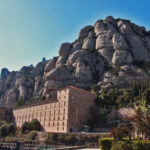 Discover the Fascinating Fun Fact about Montserrat: A Hidden Gem near Barcelona!
Discover the Fascinating Fun Fact about Montserrat: A Hidden Gem near Barcelona!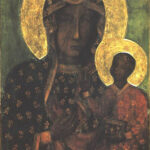 The Black Madonna: Exploring the Patron Saint's Significance and Meaning
The Black Madonna: Exploring the Patron Saint's Significance and Meaning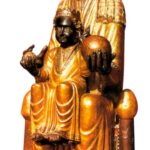 The Miracles Attributed to the Lady of Montserrat: Unveiling the Divine Mysteries
The Miracles Attributed to the Lady of Montserrat: Unveiling the Divine MysteriesIf you want to know other articles similar to What Happened to Our Lady of Montserrat: Unraveling the Mysteries of Barcelona's Famous Shrine you can visit the category WHERE YOU CAN GO.
Deja una respuesta

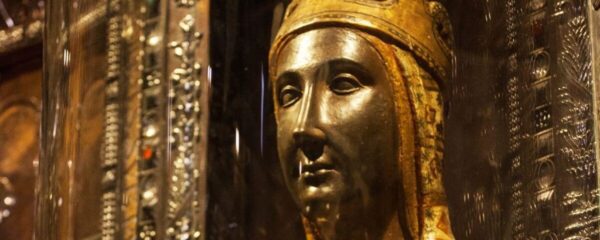
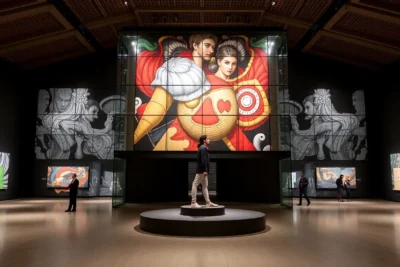
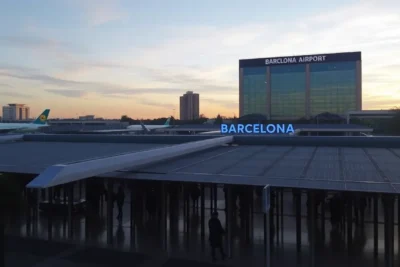

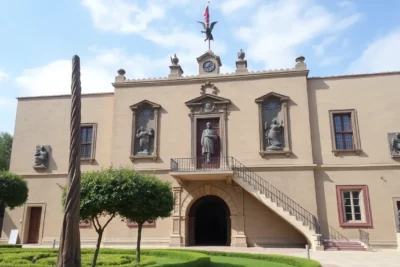
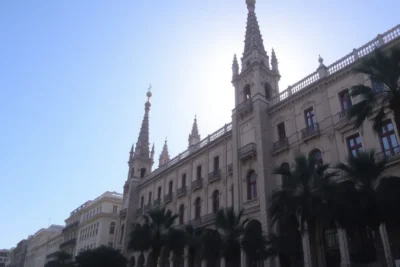

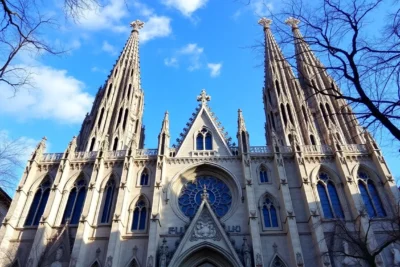
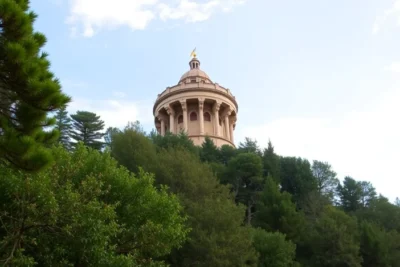
Read more!